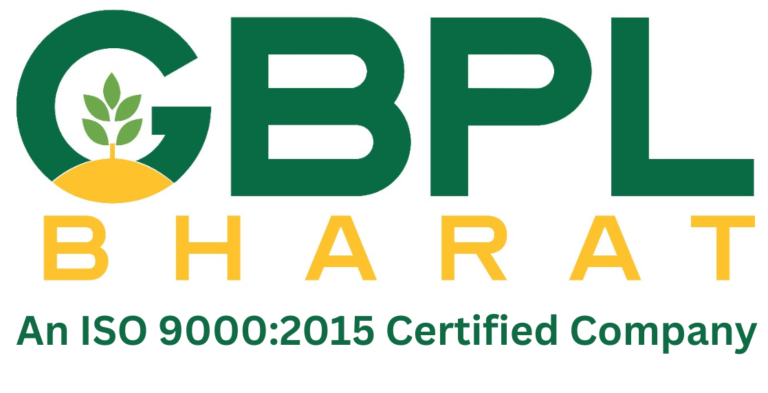Understanding Micro Nutrients
Boron (B): Boron is mobile in the soil and is subject to leaching, like nitrate and sulphate. Organic matter is the main source of B in western Canadian soils. Most Saskatchewan soils contain enough organic matter to supply B for crop needs.
Boron deficiencies have been suspected in alfalfa and canola on sandy and eroded sandy soils in the Gray soil zone. Boron may be limiting to seed production of alfalfa in these soils. Symptoms that appear in spring under cool and wet conditions tend to go away when soil conditions become warm and drier. Apply B in test strips to confirm economic yield response. Additions of high rates of B on soils where B is not required can result in toxicity and a reduction in yield. There is a narrow range between deficiency and toxicity, so extreme care must be taken to avoid overlap when B fertilizer is applied.
The first symptoms appear in the new growth, as Boron impacts cell development, sugar and starch formation and translocation. Stunted and small plants with misshapen, thick, brittle leaves are common symptoms. Cell wall development, elongation of pollen tubes, and pollination are affected by boron. Boron is not transferred easily from older to younger (upper) leaves, so younger leaves show symptoms first. In canola, the yellowing of the youngest leaves can be confused with sulphur deficiency. In alfalfa, symptoms include rosetting, yellow top, poor flowering, death of the terminal buds and poor seed set.
Boron toxicity is indicated by yellowing, followed by browning of the leaf margins and tips with sharp boundaries between the yellow and/or brown and unaffected green area.
Borate and borax forms of B fertilizer are most commonly used. Where B deficiencies have been proven, broadcast rates should not exceed 0.5 lb. actual B/ac. for cereals and 1.5 lb. actual B/ac. for canola. Do not seed-place B when using narrow openers. Boron is toxic when in contact with seed. Use low rates (not to exceed 0.3 lb. actual B/ac.) when foliar applying. Follow label directions for water volumes. Boron is toxic at low levels, resulting in reduced yield. Therefore, extreme care must be taken to apply B uniformly and to avoid overlap.
Chloride (Cl)
Chloride is a mobile nutrient in the soil. Large variations in soil Cl levels can occur over short distances. Large year to year variations also occur.
Chloride in the plant is involved in controlling water loss, maintaining turgor, transportation of K, Ca and Mg within the plant, and photosynthesis. Recent research has indicated that Cl assists in reducing the incidence of root diseases as well as helps reduce the incidence of some leaf spotting diseases of winter wheat. Chloride also impacts on N uptake.
Copper (Cu)
If you suspect a Cu deficiency in wheat, barley or canary seed (crops most sensitive to Cu deficiency) or flax, alfalfa (less sensitive than wheat) based on a soil or tissue sample, consider a foliar application on a test strip. If there is a Cu deficiency in that field, the result will be an economic yield response.
Copper is relatively immobile in soil.
Solubility and plant availability of Cu is highly dependent on soil pH. Copper solubility increases approximately 100 fold for each unit decrease in soil pH.
Copper deficiencies will most likely show up first in wheat, barley, oats or canary seed, as these crops are highly sensitive to Cu deficiency. Canola, rye, flax, and forage grasses are much less sensitive to Cu deficiency. Crop cultivars can differ widely in sensitivity to Cu deficiency. Sandy soils in the Black and Gray soil zones and peaty soils are most likely to be deficient in Cu.
Where Cu and Zn are both deficient, they both must be applied to obtain a yield increase.
Copper deficiencies usually occur in irregular patches within fields.
- High levels of soil P can also depress Cu absorption by plant roots creating the Cu deficiency.
- Avoid blending Cu sulphate fertilizer with other fertilizers. The blend readily absorbs moisture.
- On very P deficient soils, addition of Cu and Zn without adding P fertilizer may negatively affect growth.
Copper is involved in several enzyme systems, cell wall formation, electron transport and oxidation reactions. Copper is not readily transferred from older to younger leaves. In cereals, older leaves remain green and healthy with the newer leaves yellowing and wilting, and the leaf tips pigtailing. Excessive tillering, aborted heads, delayed maturity, prolonged flowering period and poor grain filling are also symptoms. These symptoms appear in irregular patches within fields. These patches have a "drought-like" appearance. Copper deficiency is often associated with increased incidence of root rot, stem and head melanosis (purpling, appears as brown patches in the field at maturity) and possibly may increase the incidence of ergot.
Iron (Fe)
Iron deficiencies in most field crops are rare in Saskatchewan. The exception is soybeans, which are rather inefficient users of Fe. Soils of high pH, poor drainage and saturation, and with high nitrates, carbonates and salts aggravate Fe deficiencies. Fe deficiencies may also occur for fruit trees, shrubs, ornamentals and strawberries especially when grown in high pH and calcareous soils. Other factors like very high P, cold and wet conditions, high lime and genetic differences in crops may result in the expression of Fe deficiency symptoms. Some varieties, for example with soybeans, are more sensitive to Fe deficiency than others. Iron deficiency sensitivity ratings are often provided for soybean varieties.
Iron is a catalyst to chlorophyll formation, acts as an oxygen carrier, and aids in respiratory enzyme systems. Iron is not translocated within the plant, so deficiency symptoms first show up on the younger leaves. The classic Fe symptom is interveinal chlorosis, a pale green to yellow leaf with sharp distinction between green veins and yellow interveinal tissue. This is termed iron deficiency chlorosis or IDC.
Foliar applied Fe fertilizers are most effective in correcting crop deficiencies in the growing season and are perhaps the best solution for high value crops like fruits grown in high pH soils. Soil applied iron was not effective in countering Fe deficiency in soybean. For soybean, selection of IDC tolerant varieties is the best defence when IDC is a concern, but foliar Fe may be a suitable rescue treatment. Lowering the pH of soils in Saskatchewan to increase the availability of Fe does not make economic sense. For fruit trees and ornamentals, a combination of foliar applied Fe chelates and soil applied iron fertilizer may be effective for several years.
Manganese (Mn)
Manganese deficiencies have been reported in oat and barley grown on organic (peat) soils across the northern grain belt in Saskatchewan. Manganese is immobile in soil. Peat soils deficient in Mn and having a high pH and/or good drainage, may respond to Mn fertilization. There seems to be little or no response to soil applied Mn fertilizer on mineral soils.
Where Cu and Mn are deficient, both these micronutrients need to be corrected in order to obtain a yield increase due to the strong Cu by Mn interaction. Fields in the Gray soil zone, and peaty areas where Cu has been corrected, may show Mn as the next limiting micronutrient. Consequently, scout these fields for Mn deficiency symptoms.
Manganese is a component in enzyme systems. Manganese activates several important metabolic reactions, aids in chlorophyll synthesis, accelerates germination and maturity, and increases the availability of P and Ca. Manganese is not translocated in the plant, so symptoms first appear on younger leaves. There appears to be some translocation of Mn in oat. Yellowing between the veins is the main deficiency symptom and can be confused with iron deficiency. Gray speck of oat is the most common symptom, with the gray specks appearing in interveinal areas. Severe Mn deficiency in oat can cause significant loss in yield.
Manganese toxicity can occur due to high soluble Mn in soils of very low pH which increases Mn solubility. Isolated instances of Mn toxicity are suspected in some sandy, acidic soils in central Saskatchewan.
Seed-placed Mn sulphate, at two to 10 lb. actual Mn/ac. (based on soil test recommendations) is recommended as the most effective means of correcting Mn deficiency in peaty soils. However, foliar applied Mn sulphate at one pound per acre is also effective. Broadcast applications are generally not economical.
Molybdenum (Mo)
Molybdenum deficiency has not been identified in Saskatchewan. Molybdenum is needed in very small amounts, so treating the seed is probably the most common way to correct this deficiency should it occur.
Livestock producers must also be aware of the Cu by Mo balance in forages to avoid problems that arise when Mo levels increase out of balance with Cu, causing poor Cu utilization in cattle. The availability of Mo to plants increases with increasing soil pH, making the balance of these nutrients an issue for high pH soils of east central Saskatchewan.
Zinc (Zn)
Zinc is relatively immobile in soil. Zinc deficiencies may occur on calcareous, high pH, sandy texture, high P, and eroded soils. Zinc deficiencies usually show up under cool, wet conditions in early spring when root growth is slow. Poorly drained soils may also be deficient. Badly eroded soils and eroded knolls may be low in Zn. High variability in soil available Zn may be encountered over short distances. Soil test to be sure. Deficiency symptoms will most likely show up first in dry bean and lentil has been identified as potentially responsive to Zn fertilization. Very high rates of P may induce Zn deficiency in flax.
Zinc is involved in enzyme systems and metabolic reactions, and is necessary for production of chlorophyll and carbohydrates. Zinc is not generally translocated within the plant (but is partly mobile in wheat and barley), so the first symptoms appear on the younger leaves. Symptoms differ from one species to another. In wheat and barley, the leaves may have light blotches or chlorosis between the veins. Younger leaves will be smaller. In flax, grayish brown spots appear on the younger leaves with shortened internodes appearing stunted.
Zinc fertilizer can be soil applied or foliar applied. Higher rates of Zn soil applied (2-5 lbs Zn/acre) should provide benefits into the following years. This should provide several years effectiveness. Chelates are foliar applied to correct Zn deficiency during the growing season but have little residual value. Oxide forms of Zn may have limited effectiveness in the year of application, but may be used to provide residual effect. Oxysulphate forms may provide some immediate plant need as well as a residual effect. The higher the percentage of sulphate (soluble and plant available) fraction, the more Zn will be in the plant available form.


Comments are closed.